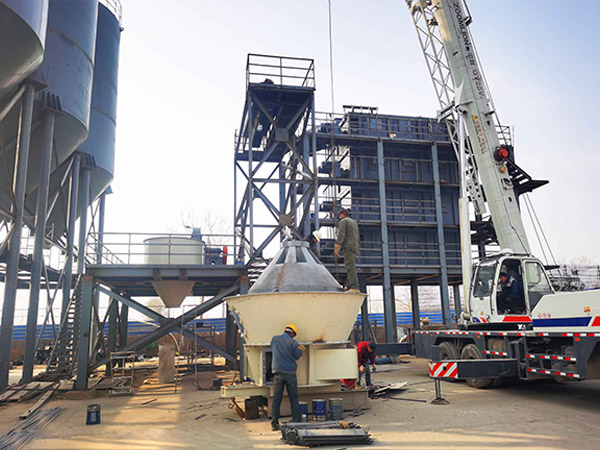What are the precautions when feeding calcium hydroxide equipment?
Calcium hydroxide equipment is mainly used to produce calcium hydroxide and other chemical products, and almost the entire production is carried out on this equipment. When feeding, you must pay attention to the relevant requirements, and there are also many things to pay attention to.
Precautions when feeding calcium hydroxide equipment
1. The calcium hydroxide equipment cannot meet the classification requirements of micropowder in the cement grinding system, mainly because the specific gravity of the micropowder is much smaller than that of the cement, so the equipment has a weak ability to identify the micropowder.
2. When entering the negative pressure operation, the grinding material is fed from the inlet of the calcium hydroxide equipment of the distributor, and meets the vortex airflow entering the primary air outlet. After being fully dispersed by the suspension dispersing mechanism, the fine powder enters the grading area through the secondary air outlet in the airflow. The resulting horizontal vortex field is graded.

3. The discharge temperature is controlled at about 45 degrees Celsius, and the water content of the discharge is controlled at about 1%. In this way, the agglomeration of finished products is prevented, and the efficiency of powder selection and the waste of slag discharge are improved.
4. The fine powder enters the rotating cage, and the negative pressure air is pumped into the subsequent dust collector from the fine powder outlet, and the finished product is collected by the dust collector. The coarse powder falls into the cone, is discharged through the coarse powder outlet, and returns to the mill for grinding again.
5. Add the raw material quicklime of the loader into the silo, evenly add it to the jaw crusher with a vibrating feeder, and crush it to about 30-50 mm. The dust generated during the crushing process of the equipment is passed by the induced draft fan through the jaw crusher and hydrogen peroxide. The dust cover of the calcium equipment is introduced into the pulse bag filter outside the workshop, which should be cleaned once a week.

6. Rigid inspection is carried out by electronic means, and laboratory personnel carry out sampling per unit time to ensure the stability of product quality and avoid quality problems caused by deviation of raw materials.
7. The equipment maintenance worker will check the operation cycle of each part, find and solve the problem in time, avoid the equipment running with faults, and improve the service life of the equipment.
8. The equipment should be remotely switched on and off in various parts of the equipment production area to deal with emergencies and avoid economic losses of personnel.
9. Rigid assessment by electronic means to avoid oil-free work and accidental wear in the lubrication cycle of each operating part.
The above are the precautions when feeding calcium hydroxide equipment. In fact, when feeding calcium hydroxide equipment, you must pay attention to learning to adjust properly, because the operations that need to be done will be different. It is hoped that in the future, operators can pay attention to some of the above-mentioned details, which will effectively increase their production.


